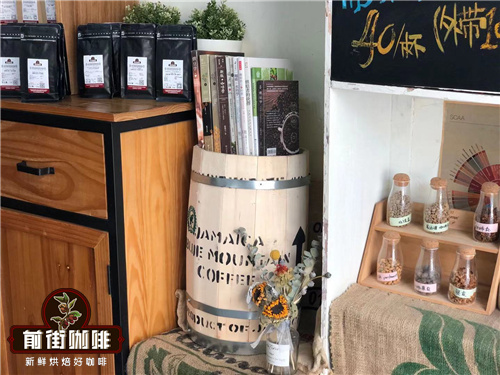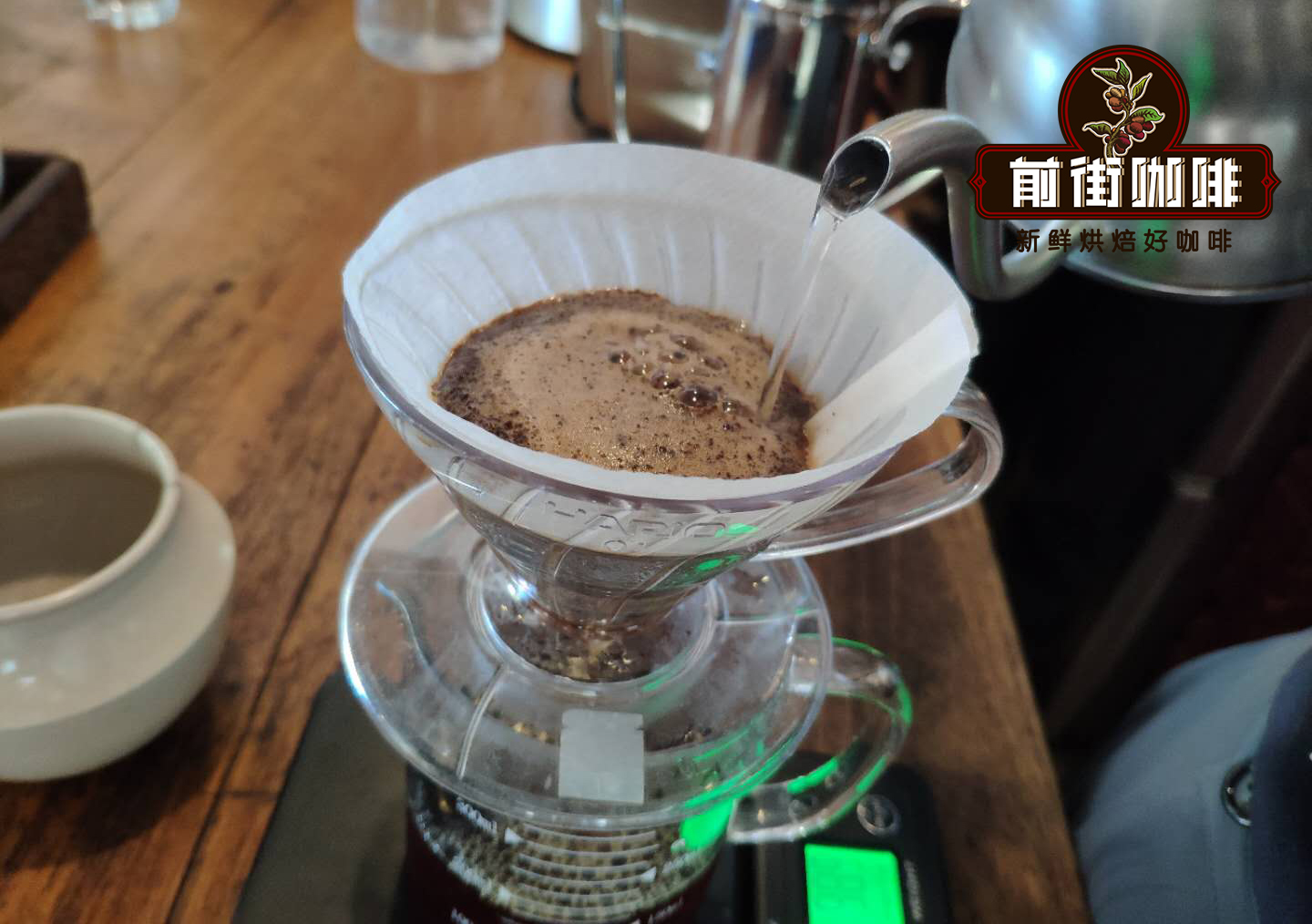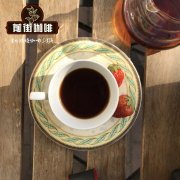Small Candle Manor Rose Summer Coffee Bean flavor taste Costa Rican rose summer coffee how to make it good

Professional coffee knowledge exchange more coffee bean information please follow the coffee workshop (Wechat official account cafe_style)
Speaking of the famous rose summer varieties, Qianjie believes that the rose summer coffee that appears in everyone's mind must be the rose summer coffee of the Panamanian Emerald Manor. The unique fragrance of flowers and the smooth taste of fruit juice are very unforgettable. Today, in front of the street, we will introduce Rose Summer Coffee, not the Rose Summer of Panama, but the Rose Summer Coffee of Costa Rica, the neighbor of Panama.

Costa Rican coffee cultivation has a long history and was introduced from Cuba in 1729, making Costa Rica the first country in Central America to grow coffee and the first to grow coffee because of its commercial value. In addition, this Costa Rican rose summer coffee uses the raisin honey treatment that Costa Rica is good at, so the flavor of this rose summer coffee is very different from that of Panamanian rose summer coffee.
There are also many rose summer coffee on the front street, in addition to Panama rose summer coffee, as well as the rose summer blend of Milasu Manor in Costa Rica. Costa Rica has eight major coffee producing areas, namely: Valley Central Occidental in the western valley, Valley Central in the central valley, Tarrazu in Tarazu, Tres Rios in Sanshui, Orosi in Europe, Brunca in Brenka, and Turrialba in Duli Alba. Tarazu is the boutique coffee producing area of Costa Rica, and Milasu Manor is located in Tarazu, Costa Rica. The climate of Milasu Manor is very suitable for growing coffee trees, fertile volcanic rock, year-round rainfall and high altitude, which is very helpful to form high-quality "hard beans" of Costa Rican coffee. The sour taste of this kind of coffee beans is very good, and the flavor of coffee beans is stronger than that of low-altitude coffee beans like Brazil.

In addition, Little Candle Manor is also famous in Costa Rica for producing the world's best rosy summer coffee. Small Candle Manor Rose Summer Coffee is rich in acid, with obvious plum, citrus fruit aroma, the front street also put on a small Candle Manor Rose Summer Coffee, it is worth starting with.

When it comes to Costa Rica's treatment of coffee beans, Qianjie is no stranger to us. Costa Rican coffee is very famous for its honey treatment technology. Generally, after removing the exocarp and pulp of raw coffee beans, pectin is retained for drying. Therefore, Costa Rican honey processing coffee beans is very sweet. Through the cup honey test of coffee beans and washed coffee beans in the front street, it is found that honey-treated coffee beans are sweeter than water-washed coffee beans, and the alcohol thickness of honey-treated coffee is much higher than that of ordinary washed coffee beans.

If you have tasted the Costa Rican Milasu Rose Summer Coffee on the street, you will find that this Rose Summer Coffee retains the cleanliness of washing and increases the sweetness and caramel taste. But Milasu Manor Rose Summer Coffee on the front street does not use ordinary honey treatment, but a method called raisin honey treatment, which retains 100% pectin and zero water treatment. First, the farmers select the picked coffee fruit, remove the defective fruit, then dry the selected coffee fruit on an elevated bed, and then peel it with a peeling machine. This method is more difficult and takes more time than honey treatment. Therefore, this Costa Rican rosy summer coffee is rich in strawberry acidity and a hint of jasmine.
The Costa Rican rosy summer coffee on the front street is a little different from the Panamanian red, green and blue rosy summer coffee. This rosy summer coffee on the front street contains only 50% rosy summer beans and half the mixture of ET47, SL28 and MAICO. Due to the addition of this Costa Rican coffee to Rosa Coffee, it has a very strong floral aroma.
I believe we are no stranger to Rose Summer Coffee. Rosa Coffee is most famous for its Emerald Manor in Panama. But Rosa coffee was not grown in Panama in the first place. Instead, it came from the Rose Summer Forest of Ethiopia, the hometown of coffee, and then introduced to Costa Rica in 1953 and Panama in 1970.
At first, because the yield of the rose summer coffee tree was not high, it directly affected the harvest, and the farmers did not want to plant it, so it was only used as a windbreak tree, but no one noticed it at that time. Until Daniel Peterson, the owner of the Emerald Manor in Panama, accidentally found that the coffee garden went unnoticed and acted as a windbreak tree to see the coffee beans produced by the rose summer coffee tree, with Africa's unique citrus and floral flavor. So he separated the coffee beans independently to participate in the Panamanian coffee bean cup test, and became popular after winning the Panamanian coffee cup test competition for many years. The Emerald Manor has set off a rosy summer craze, which affects the global coffee industry.
In the 1990s, the Costa Rican Coffee Institute introduced many trees to farmers in the Tarazu area as research species to prevent leaf rust. This variety of coffee beans is sweet with charming fruit and tastes very clean.

SL28 is from the Scott Laboratory in Kenya. The variety is very drought-resistant and belongs to the bourbon gene group, so the shape of SL28 coffee beans looks similar to the round and thick shape of the bourbon variety.
With the increasing popularity of rose coffee, in recent years, more and more countries have joined the queue to grow rose, with the exception of Costa Rica and Panama, such as Colombia and Ethiopia. Qianjie has also tested the rose summer coffee of this Milasu manor. when it is ground into powder, it will smell the dry fragrance of jasmine, and when poured into boiling water, a fragrance of jasmine will come to the nostrils. When really tasting, the mouth will have a very bright lemon acidity, cooled will have passion fruit aromas and strawberry juice, honey-like sweet finish. This is a very special Rose Summer flavor, which is worth starting with.
Suggestion on brewing coffee in Qianjie

Filter cup: V60001
Powder content: 15g
Powder / water ratio: 1:15
Water temperature: 90 °C
Degree of grinding: medium and fine grinding (Chinese standard No. 20 screen pass rate 80%)
The front street cooking technique: first wet the filter paper and preheat the filter cup and the coffee pot. Steam with 30 grams of water for 30 seconds, small water flow around the circle to 125 grams for sectional injection, water level drop is about to expose the powder bed, continue to inject water to 225 grams to stop injection, and so on when the water level drop is about to expose the powder bed, remove the filter cup, (steaming starts timing) the extraction time is 2 minutes 39 percent 01 ".
Cooking flavor: the aroma of jasmine, the sweet flavor of imported raisins, the sweetness of strawberry fudge, the creamy taste of nuts.
For more boutique coffee beans, please add private Qianjie coffee on Wechat. WeChat account: kaixinguoguo0925
Important Notice :
前街咖啡 FrontStreet Coffee has moved to new addredd:
FrontStreet Coffee Address: 315,Donghua East Road,GuangZhou
Tel:020 38364473
- Prev

Why is the price of Rosa coffee beans so high? Because every cup has been honed and tested.
Professional coffee knowledge exchange more coffee bean information please pay attention to the coffee workshop (Wechat official account cafe_style) tea can drink from 400 yuan to 10, 000 yuan per jin, why can not drink good coffee with high unit price? Come and be nice to yourself, taste the unique taste of Rose Summer Coffee, and enjoy the happiness of the moment! Give the best Rosa coffee to the most professional Qianjie coffee
- Next

Cold knowledge of rose summer coffee: China was the first to introduce rose summer varieties for planting, which became famous earlier than rose summer
Professional coffee knowledge exchange more information on coffee beans Please follow the coffee workshop (Wechat official account cafe_style) rose summer coffee beans, some people call it geisha coffee or geisha beans, they are all the same kind of coffee beans. Its name comes from Geisha Mountain in Ethiopia, which sounds like the famous Japanese geisha, hence its name. Rose summer coffee beans
Related
- Detailed explanation of Jadeite planting Land in Panamanian Jadeite Manor introduction to the grading system of Jadeite competitive bidding, Red bid, Green bid and Rose Summer
- Story of Coffee planting in Brenka region of Costa Rica Stonehenge Manor anaerobic heavy honey treatment of flavor mouth
- What's on the barrel of Blue Mountain Coffee beans?
- Can American coffee also pull flowers? How to use hot American style to pull out a good-looking pattern?
- Can you make a cold extract with coffee beans? What is the right proportion for cold-extracted coffee formula?
- Indonesian PWN Gold Mandrine Coffee Origin Features Flavor How to Chong? Mandolin coffee is American.
- A brief introduction to the flavor characteristics of Brazilian yellow bourbon coffee beans
- What is the effect of different water quality on the flavor of cold-extracted coffee? What kind of water is best for brewing coffee?
- Why do you think of Rose Summer whenever you mention Panamanian coffee?
- Introduction to the characteristics of authentic blue mountain coffee bean producing areas? What is the CIB Coffee Authority in Jamaica?

